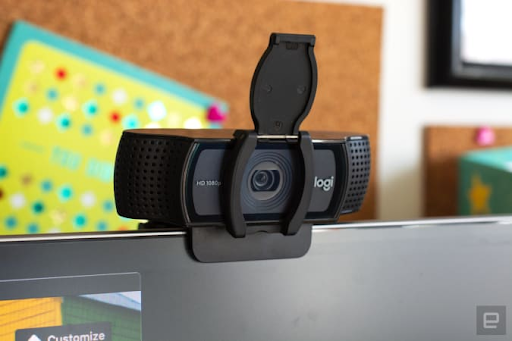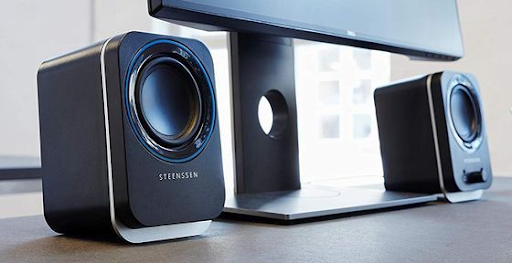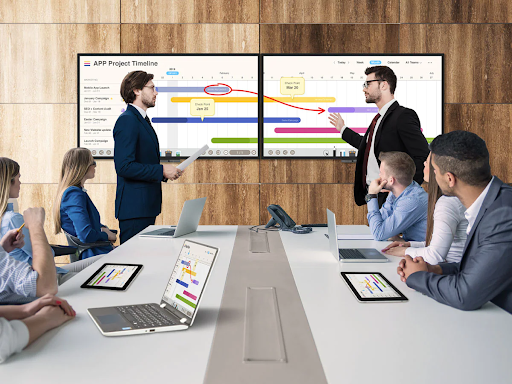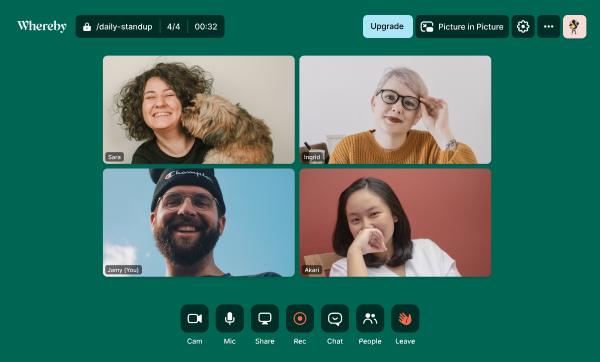Video Conferencing Equipment: The All-in-One Guide to The Perfect Setup
Now that video conferencing is used on a daily basis, make your experience more enjoyable with a new home office setup.
Work as we know it is changing.
Before the pandemic, most businesses maintained in-office operations where video conferencing was occasionally used for connecting with clients or colleagues across the globe.
Now video conferencing has taken the center stage across numerous organizations, with 78% of corporates reporting that they leverage video conference software to engage both their remote and in-house teams.
Essentially you can always connect to a video conference from anywhere—home, in a coffee shop, or the office—but it’s important to note that the perfect video conferencing experience takes more than just your laptop and software.

You need to double down on the equipment that helps you optimize your video conference experience for clarity, speed, and effective communication.
In this article, we’ll explore a variety of video conferencing equipment you need to unlock your productivity and get the best value out of your video meetings. These include:
Cameras
Headsets & headphones
Microphones
Video collaboration systems
Speakers
Smartboards
Cameras

Many devices come with a camera built in, so why bother investing in another?
For the most part, your built-in camera should be good enough.
Depending on your device, a built-in camera usually captures high-fidelity video, but in several cases where you’re looking to present a better image, dedicated webcams are a better bet since they’re designed from the ground up, packed with enough specs to deliver significantly better video.
No matter the brand, there’s just not enough space, or even the will to build a high-end camera into a laptop device.
Case in point: Apple’s latest flagship, the 16-inch MacBook Pro, offers a measly 720p resolution—and that’s for a laptop considered of great quality.
On the other hand, it’s nothing unusual for dedicated webcam devices to offer 1080p and as high as 8K video— an ultra-high-definition video experience that brings unmatched crispiness to your meetings.
If you’re using video conferencing for higher stakes work, say sales, recruiting, or board meetings, where presentation is critical, you need a dedicated webcam that’ll help you project an image of clarity and confidence with minimal tweaking.
Headsets & headphones

To start, we’ll clarify what the difference is between a headset and a headphone. A headset has a conspicuous, extending microphone attached while a headphone can either be for listening only or have a built-in microphone.
So, why do you need a pair? Headsets function as listening devices that help you focus on the conversations. If you use your laptop’s speaker and microphone you risk picking up background noise, sound distortion and may have to ask your surroundings to be quiet.
‘Could you repeat that, please? I didn’t quite catch you…. Hello? Can you still hear me?’
Headsets offer a dedicated device for audio and ensure you’re not lost at any point in a conversation.
Microphones

While headsets focus primarily on audio output, microphones are the input terminal that brings the sound to others. Again, you could make do with your built-in microphone if you’re attending mostly internal meetings, standups, or casual conversations.
But when you’re looking to transform your audio experience, a good microphone will:
Capture your voice with high fidelity
Filter out ambient noise
Sync well with the rest of your video conferencing stack, i.e., not interfere with speakers.
A great microphone doesn’t necessarily have to be expensive, so you should be able to find one that suits your budget.
Video collaboration systems

Video collaboration systems (also known as room devices) are essentially a suite that combines other video conferencing tools into one complex for hybrid video conferences. Hybrid video conferencing refers to meetings where some participants are in an office together, while the others are distributed. This is typically useful for offices with hybrid models.
Video collaboration devices are typically set up in a meeting room with cameras and audio devices (microphones and speakers).
Speakers

Dedicated speakers come in handy when you’re looking for an alternative to both headphones and built-in speakers. When you’re running a hybrid meeting with a group of people in the same room, speakers are the best option for communicating audio to a group of people vs. trying to loop in audio individually.
Digital whiteboards

As the name implies, digital whiteboards or smartboards, are simply monitor-like devices for sharing data, annotating, and presentations. This is especially useful for fully remote and hybrid teams.
Great hardware? Check. Now what?
While you’re busy choosing the best video conferencing equipment, don’t forget the software that makes it all work together.
Even with the best hardware, it takes an equally equipped video conferencing solution to ensure a seamless experience. Whereby allows you to collaborate directly in the meeting room on tools such as Miro, Google docs, or Trello. Instead of having to show two different tools, you can keep everything in one.

Whereby is designed as the simplest video conferencing solution for individuals and teams of all sizes. With no download or app needed, you can easily connect your equipment to your video meeting in just seconds.
Whereby is equipped with features that offer you:
One-click access via your browser —never download Zoom one second before a meeting again
Extensive controls with no hassle
Chat functionality with emoji reactions
Screen sharing and Breakout Groups
Third-party integrations with your existing apps, such as Miro, Slack, and Google Drive
Low latency video and audio across all devices


